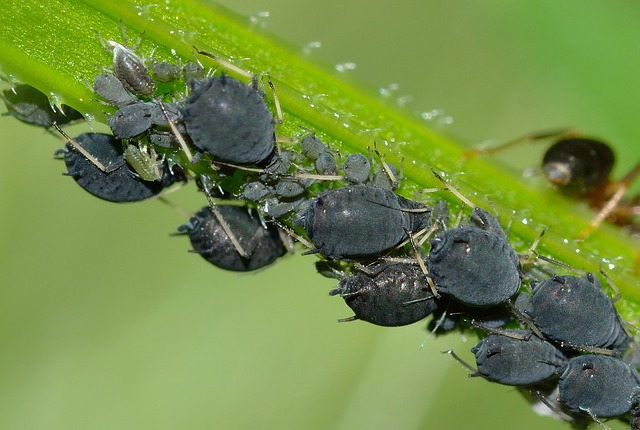As Pennsylvanians, we are blessed to have a climate that sustains the growth of a variety of beautiful trees, shrubs, and plants. However, our weather also lends itself to an assortment of damaging pests that can harm the splendor and vivaciousness of our happy and green landscape. As with many pests, the best action is to be proactive. To help you know what to look for, here is a brief overview of some of the most common and damaging pests that might be eating your plants.
Lacebugs
These pests feed by sucking the sap from the foliage of trees and shrubs, leaving them looking mottled, stippled and discolored. If heavily infested, the leaves may turn yellow and fall from trees and shrubs. The underside of leaves will look dirty with dark-brown spots and stains. You may also spot some of the adults and spiny, dark-colored nymphs. When disturbed, lace bugs display a peculiar bouncing movement.
Bagworms
Bagworms prefer juniper, arborvitae, spruce, pine, and cedar but also attack deciduous trees. On evergreens, they’ll eat lots of the buds and foliage, causing branch tips to turn brown and then die. If they eat more than 80 percent of the tree, the entire evergreen may perish. On deciduous trees (those that lose their leaves in winter), bagworms chew small holes in the leaves and can cause defoliation.
Aphids
As they feed, aphids secrete large amounts of a sticky fluid known as honeydew. This sweet syrup-like substance drips onto plants, attracting ants and promoting a black sooty mold growth on leaves. Low to moderate numbers are usually not harmful to plants and rarely require aphid control. However, heavy infestations will stunt plant growth. Several species can transmit plant disease, particular viruses which they pass on during a feed. Be on the lookout for curled, wilted or yellowed leaves, honeydew excretion that makes the plant sticky, and black mold growth on honeydew
Emerald Ash Borer
The Emerald Ash Borer is an emerald green beetle that originates from Eastern Asia. It’s known for its highly destructive nature towards ash trees and is responsible for the death of over 50 million trees in over 20 states. An ash tree will die once infected by the Emerald Ash Borer if not treated quickly and carefully. There are specific signs to look for when checking for an Emerald Ash Borer infestation in your ash tree: canopy dieback (beginning at the top of the tree and moving downward), “D” shaped holes in the bark, bark splitting to expose “S” shaped galleries underneath, and increased woodpecker activity.
The Hemlock Wooly Adelgid
Since there are no native predators for this insect, it has spread unchecked throughout our landscapes and is threatening the native stands of Hemlock throughout the American northeast. The adelgid itself is a small black insect that attaches to the underside of hemlock twigs, where it remains and feeds. As the insects develop, they secrete the characteristic white wax that gives the bug its name. A mature infestation of adelgid looks like small cotton balls have been pasted to the underside of the twigs. Fortunately, this insect has proven to be easy to control, and we have had success in reviving trees with significant damage and heavy infestations.
Scale Insects
This scale is extremely difficult to control as the white waxy covering over the insect prevents insecticides from coming into contact with the insect. Young yellowish-green crawlers emerge in late June into July migrating onto leaves to feed. This feeding causes premature yellowing and shedding of leaves. The leaves that fall will be very sticky from honeydew. A black sooty mold will form on twigs and branches – branches may be killed by heavy scale populations.
No two properties are alike, and neither are the solutions for individual challenges. Our experts make an informed decision on how to address your pest situation. Our method minimizes the overuse of pesticides by target applications only where needed. We use effective products and beneficial insect release to ensure a solution worthy of your healthy, natural landscape.


